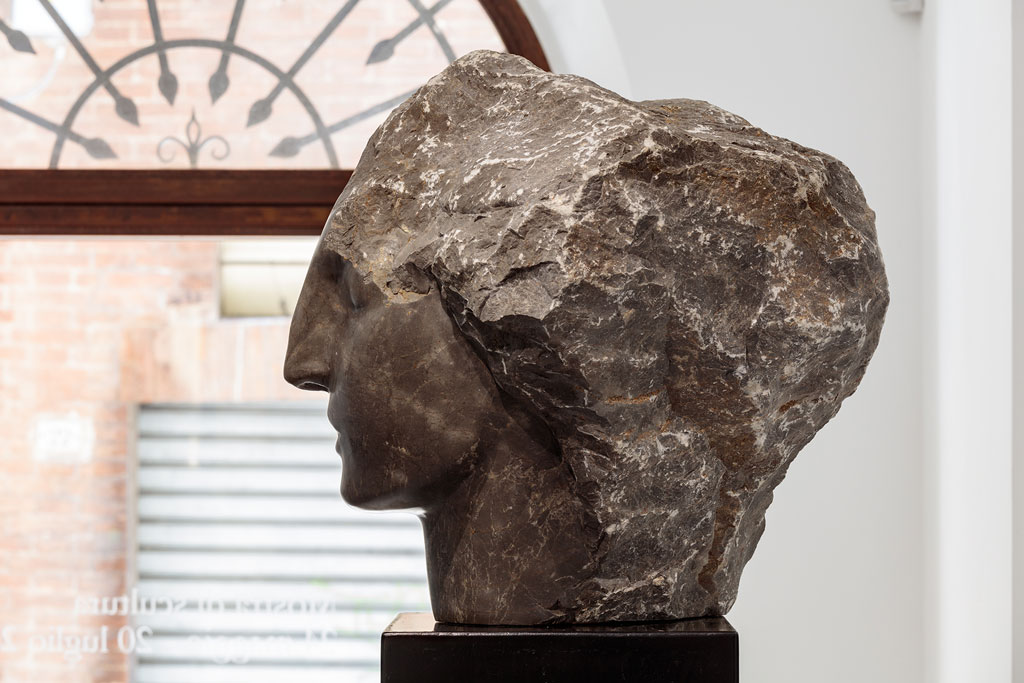Interview with Sculptor Emily Young
'If we don’t honour the planet's power to create and destroy us, we are not going to last long'
This post may contain affiliate links. Learn more
At a time where concerns over the climate crisis are rising, where technology and commerce are becoming all-consuming and where we are losing touch with the natural world, it’s artists like Emily Young that are shining a light on the foreseeable dark.
Branded as ‘Britain’s greatest contemporary stone sculptor’ (Art Daily), Young is certainly an expert in her field, but her work precedes more than just skill and creative capability – it speaks to an audience who have perhaps forgotten how to connect with the Earth. Ever since she began carving with stray materials found in quarry yards in the early 80s, Young has had an affinity for sculpting and connecting with the planet in this way. With this is mind, it appears her work is now more prominent than ever.
We asked Young about what inspires her, what drew her to producing such meaningful sculptures, and her thoughts on the intricate relationship between the Earth and art…
What drew you to creating sculptures?
Throughout my life, I’ve spent time in Rome, which has meant I’ve had a huge blast of history in the form of art works and architecture, ruins and museums. My grandmother was also a working sculptor. These two things together made it possible for me to imagine being a stone sculptor, and I was always curious about how we got to be the kinds of creatures we humans are.
How did your early travels influence your work?
Living in different cultures across the globe, I saw how our human preoccupations revolve around birth and death and our relationship to the planet, and the thousands of different stories describing these basic things. I was interested in finding something that was common to all humans through time and across the globe.
You tend to focus on the human, Earth relationship. How do you draw inspiration from this?
The capacity of humans to be both extremely creative, and also extremely destructive, means we must be very, very thoughtful about how we live our lives on Earth. I carve a sense of quietness and contemplation of our responsibilities to the life on Earth and its future. That look should be more familiar to people, beyond the distractions of consumerism and greed and fear.
Your most recent Environmental Art project received international acclaim – what was the premise behind this?
We put some large, ten-tonne plus, blocks of carved marble into the sea near where I live in Italy. The sea bed there had become a virtually dead zone due to illegal dredger trawling, far too close to the coast, destroying vast swathes of sea meadows, where sea creatures should be laying their eggs and growing to adulthood safely. These huge blocks make it impossible for the trawlers to come to that part of the sea, destroying their nets. The carved blocks are both useful to protect the sea there, and also beautiful, a poetic statement of how much we honour natures beauty and wildness. It’s also a voice calling to the future. Who knows who will come across these sculptures in the far distant future? We now have a growing ecosystem there again, rich with plants and creatures reclaiming their home.
What are your thoughts on the relationship between art and the climate crisis?
If we don’t honour the planet’s power to create and destroy us, we are not going to last long. There’s a conversation around this subject, and we must move much faster on it: it’s between people and governments, and big business across the globe, and surely must be helped by any sensible person, and that includes artists – we must all do what we can. Sometimes artists can tell what’s happening in societies before anyone else. Maybe that’s part of their job.
Given everything that is going on politically and environmentally, do you think it’s more important than ever for people to find meaning in art?
It strikes me that a really good way of finding meaning in our lives would be the knowledge that we are helping to protect our planet, who gave us life. With that comes a sense of being of service to a greater good. There are millions of people who have very little choice about what happens on Earth. Understanding and expressing gratitude and honouring our home planet/creator seems a very good use of artistic endeavour.
How does your day-to-day life and environment in Tuscany influence your work?
I find the richness of the silence and stillness in the landscape is like a kind of food for me. Also, the wild energy of bad weather. Life here is quite hard physically, and hands on, both the sculpture work and the everyday things of looking after the land and the house. There’s a quiet energy that I see in my work when it’s all going well.
Are there any artists or sculptors that you particularly look up to or that inspire you?
I like to think of the very first human carvers of stone, who found a face or form in the shape of the stone and worked imaginatively with that. Unknown, but very like us.
Visit Emily’s latest exhibition at the Bowman Sculpture Gallery from 21 November – 31 January 2020
READ MORE: Interview with Emma Moir, Founder of Box Galleries | Best Art Exhibitions in the UK | Sculpture





